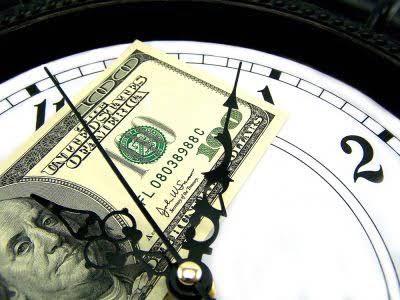
Our team is ready to learn about your business and guide you to the right solution. Now that we have a beginning value and DDB rate, we can fill up the 2022 depreciation expense column. In many countries, the Double Declining Balance Method is accepted for tax purposes. However, it is crucial to note that tax regulations can vary from one jurisdiction to another.
- Adhering to standards like Generally Accepted Accounting Principles (GAAP) or International Financial Reporting Standards (IFRS) is critical for consistency and transparency.
- Since the double declining balance method has you writing off a different amount each year, you may find yourself crunching more numbers to get the right amount.
- Depreciation is the act of writing off an asset’s value over its expected useful life, and reporting it on IRS Form 4562.
- You’ll have your Profit and Loss Statement, Balance Sheet, and Cash Flow Statement ready for analysis each month so you and your business partners can make better business decisions.
- First, the straight-line depreciation rate is determined by dividing 100% by the asset’s useful life.
What is the DDB depreciation method?
However, the total amount of double declining balance method depreciation expense during the life of the assets will be the same. The Double Declining Balance Method (DDB) is a form of accelerated depreciation in which the annual depreciation expense is greater during the earlier stages of the fixed asset’s useful life. The double declining balance method calculates depreciation by applying a constant rate to an asset’s declining book value.
How Does the Double Declining Balance Method Compare Against Other Depreciation Methods?
- Although the method does not directly include salvage value in annual calculations, it becomes relevant in the final adjustment.
- The depreciation expense recorded under the double declining method is calculated by multiplying the accelerated rate, 36.0% by the beginning PP&E balance in each period.
- In that year, the depreciation amount will be the difference between the asset’s book value at the beginning of the year and its final salvage value (usually a small remainder).
- The double declining balance method significantly influences how depreciation is recorded for financial reporting.
- That’s why depreciation expense is lower in the later years because of the fixed asset’s decreased efficiency and high maintenance cost.
- Bench simplifies your small business accounting by combining intuitive software that automates the busywork with real, professional human support.
And if it’s your first time filing with this method, you may want to talk to an accountant to make sure you don’t make any costly mistakes. On the other hand, with the double declining balance depreciation method, you write off a large depreciation expense in the early years, right after you’ve purchased an asset, and less each year after that. So the amount of depreciation you write off each year will be different.
What Assets Are DDB Best Used for?

Under the straight-line method, the 10-year life means the asset’s annual depreciation will be 10% of the asset’s cost. Under the double declining balance method the 10% straight line rate is doubled to 20%. However, the 20% is multiplied times the fixture’s book value at the beginning of the year instead of the fixture’s original cost. The “double” means 200% of the straight line rate of depreciation, while the “declining balance” refers to the asset’s book value or carrying value at the beginning of the accounting period. Companies are also required to disclose their depreciation methods and estimates in the notes to financial statements. This transparency helps stakeholders understand the rationale behind the chosen method and its financial impact.

Ways to Finance Your E-Commerce Business
- However, the total amount of depreciation expense during the life of the assets will be the same.
- This process continues annually, with depreciation decreasing as the book value declines.
- Depreciation is an accounting process by which a company allocates an asset’s cost throughout its useful life.
- An exception to this rule is when an asset is disposed before its final year of its useful life, i.e. in one of its middle years.
- This method balances between the Double Declining Balance and Straight-Line methods and may be preferred for certain assets.
- The Units of Output Method links depreciation to the actual usage of the asset.
As a result, at the end of the first year, the book value of the machinery would be reduced to $6,000 ($10,000 – $4,000). Double-declining depreciation charges lesser depreciation in the later years of an asset’s life. In the last year of an asset’s useful life, we make the asset’s net book value equal to its salvage or residual value. This is to ensure that we do not depreciate an asset below the amount we can recover by selling it. It is important to note that we apply the depreciation rate on the full cost rather than the depreciable cost (cost minus salvage value).

When accountants use double declining appreciation, they track the accumulated depreciation—the total amount they’ve already appreciated—in their books, right beneath where the value of the asset is listed. If you’re calculating your own depreciation, you may want to do something similar, and include it as a note on your balance sheet. Start by computing the DDB rate, which remains constant throughout the useful life of the fixed asset. However, depreciation expense in the succeeding years declines because we multiply the DDB rate by the undepreciated basis, or book value, of the asset.

Double Declining Balance Method Formula (DDB)
For instance, the IRS requires compliance with the Modified Accelerated Cost Recovery System (MACRS), which may involve salvage value considerations for tax purposes. Both DDB and ordinary declining depreciation are accelerated methods. The difference is that DDB will use a depreciation rate that is twice that (double) the rate used in standard declining depreciation. Recovery period, or the useful life of the asset, is the period over which you’re depreciating it, in years. Double declining balance depreciation isn’t a tongue twister invented by bored IRS employees—it’s a smart way to save money up front on business expenses. Our intuitive software automates the busywork with powerful tools and features designed to help you simplify your financial management and make informed business decisions.
Your basic depreciation rate is the rate at which an asset depreciates using the straight line method. Eric Gerard Ruiz, a licensed CPA in the Philippines, specializes in financial accounting and reporting (IFRS), managerial accounting, and cost accounting. He has tested and review accounting software like QuickBooks and Xero, along with other small business tools. Eric also creates free accounting resources, including manuals, spreadsheet trackers, and templates, to support small business owners. This formula works for each year you Insurance Accounting are depreciating an asset, except for the last year of an asset’s useful life.

Learn how to satisfy the IRS using a reasonable salary for your shareholders. If you’re self-employed, you’ll need to fill out Schedule C at tax time. On Thursday, you have one eighth left, and you drink half of that—so you’ve only got one sixteenth left for Friday. And so on—as long as you’re drinking only half (or 50%) of what you have, you’ll always have half leftover, even if that half is very, very small. how is sales tax calculated Next year when you do your calculations, the book value of the ice cream truck will be $18,000.
